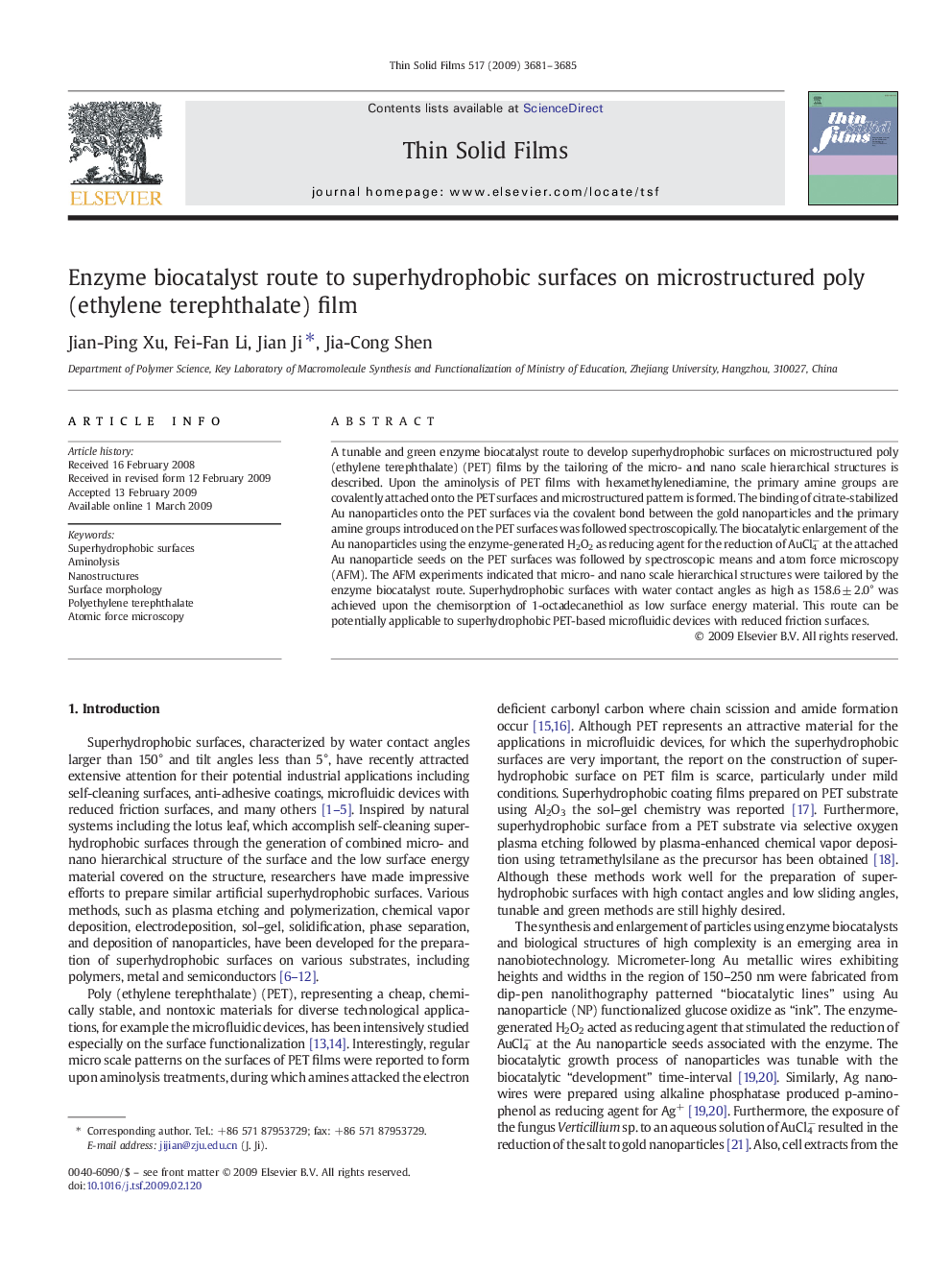| Article ID | Journal | Published Year | Pages | File Type |
|---|---|---|---|---|
| 1671937 | Thin Solid Films | 2009 | 5 Pages |
A tunable and green enzyme biocatalyst route to develop superhydrophobic surfaces on microstructured poly(ethylene terephthalate) (PET) films by the tailoring of the micro- and nano scale hierarchical structures is described. Upon the aminolysis of PET films with hexamethylenediamine, the primary amine groups are covalently attached onto the PET surfaces and microstructured pattern is formed. The binding of citrate-stabilized Au nanoparticles onto the PET surfaces via the covalent bond between the gold nanoparticles and the primary amine groups introduced on the PET surfaces was followed spectroscopically. The biocatalytic enlargement of the Au nanoparticles using the enzyme-generated H2O2 as reducing agent for the reduction of AuCl4− at the attached Au nanoparticle seeds on the PET surfaces was followed by spectroscopic means and atom force microscopy (AFM). The AFM experiments indicated that micro- and nano scale hierarchical structures were tailored by the enzyme biocatalyst route. Superhydrophobic surfaces with water contact angles as high as 158.6 ± 2.0° was achieved upon the chemisorption of 1-octadecanethiol as low surface energy material. This route can be potentially applicable to superhydrophobic PET-based microfluidic devices with reduced friction surfaces.
